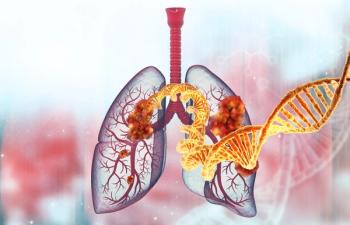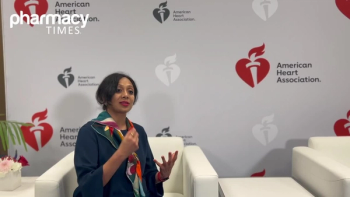
Social Determinants of Health Can Impact Vaccination Hesitancy, Appointment Adherance
John E. Clark, PharmD, MS, FASHP, FFSHP, Director, Diversity, Equity, and Inclusion at the Taneja College of Pharmacy, University of South Florida, discusses the importance of addressing social determinants of health to improve patient outcomes.
PT Staff: Can you start by explaining a little bit about your background and how you got involved with ABHP (Association of Black Health-system Pharmacists)?
John Clark, PharmD, MS, FASHP, FFSHP: Yeah, of course, I get that question often since I started working with ABHP when I was a student, and only because when I would go to other conventions, I didn't see a lot of Black people there. So, when I saw ABHP it was like I gravitated towards that group. And as they begin to (it’s still not a large group now, but when they) start working on things, it was mostly associated with minority health care.
So when you take a big look at the big picture, do it that's changing now— but in the 1970s and the 80s, attention toward minority health care was not there, not even in the pharmacy Association. And so what we started noticing was trying to encourage a lot of the pharmacy association to incorporate more education for pharmacists on minority health care. The benefit of having a group like ABHP was that their mission and vision stood for what they were about. And part of the reason they didn't integrate well with some of the larger groups is because they are oftentimes viewed as a small little niche organization—which it is really—that was viewed negatively. But in reality, that's a positive. There is nothing wrong with that [and] it is gradually changing. Now you can see where there's a lot more incorporation of topics and subject matters, even training into diversity, equity, and inclusion and not healthcare. That's been the benefit of ABHP for years, but it just somehow didn't seem to go over very strongly.
PT Staff: Why is it important to see more representation in not only the pharmacy industry, but health care in general?
John E. Clark, PharmD, MS, FASHP, FFSHP: Well the big thing that everybody's on, including the federal government, is health disparities. I think what we expect to see in the future is the change in in these disparities where you may have 30% of diabetes patient not have an amputation, we would want to see those numbers going down—rather than 30%, it should be closer to 2% to 5%. Things like social determinants would have to be addressed, because oftentimes, those things or those health care outcomes are affected by that. And so, the expectation would be that we would see a narrowing of the gaps and the health disparities. That's why the major pillars with most organizations down Black or White is that we want healthier communities. And to get healthier communities, we have to address the disparity in health that we see broadly throughout the country.
PT Staff:You and a few of your students submitted a protocol to the Institutional Review Board (IRB) for the impact of social determinants on vaccine hesitancy. Can you talk a bit about the proposal for this?
John E. Clark, PharmD, MS, FASHP, FFSHP: We put together protocols—we're looking at things like social determinants that may cause them to be hesitant about taking vaccines. Now in the broader surveys that have been studying this, they're looking at employment status, food security, housing, security, and physical and mental well-being. Now, we got to add on to that. We're going to add things in here by ethnicity, maybe income, the educational background of the of the of the participants.
We don't expect to get too much difference from what you see from the federal government that's doing the same thing. One thing we may get, though, is that our clinic is 80% Hispanic. I got most of our students are working, they speak Spanish, so they're going to be interviewing these patients. So what we will have this contribute to the big picture is that we either will come up with different data or different findings than the federal government. We are going to complement what they find. [And] we will definitely be presenting these projects at state and national conventions [because] it will benefit the students, in that they get things on their resume, they get exposure to other people. And that's what I'm trying to do. I always tell them I want to elevate them. So you guys walk out of your competitive with a lot of other people. This, this is what we're doing.
We're doing it not only with vaccine hesitancy, but we’re also looking at social determinants—another group of young ladies that I work with here, my students in this project, they're looking at social determinants— and its impact on appointments, you know, whether they keep the appointments, and does the if they don't, is there a relationship? We were talking about this Tuesday… I've tried to keep making them think, “is there a relationship between the number of missed appointments and the outcomes of their health?”
So, I said, “Let's narrow this down to very simple,” [because] they want to look at everything. “Let's take diabetes, and we're going to use the measure of improvement is the hemoglobin A1C (A1C) level. So you're going to look at all the diabetic patients, look at their appointment schedules, and see which one did they keep? Which one did they miss? and then what was the A1C each time they came in?” So we can look at the relationship between the appointments, whether they were missed or kept, and the outcome, which will measure the improvement (their A1C level).
PT Staff: How can a resource provider improve patient care (directly/indirectly) by understanding social determinants of health?
John E. Clark, PharmD, MS, FASHP, FFSHP: We're looking at the impact it has and the way we can improve it (our care to patients in access to care,) you know. Can we help them get what they need to be able to make sure that outcomes come out good?
We also want to look at adherence to care. So, if they're hesitant, if they are missing appointments, that means there's a possibility they are not adhering to the medication. Pharmacists play a very strong role in trying to make sure that outcomes are reached…by them taking the medication.
We're also looking at, “Can this data help us understand how to improve coordination of care between pharmacists, medical provider, and any other groups?” Like maybe physical therapy, sociologists, that may be involved. So, once we get this information, we may find out that there is something we identified in the social determinants that we cannot address. A good example would be the appointments. Now, suppose we find out that that's a big strong relationship with the missing appointments. And 1 of the other determinants in that tool is their ability to get transportation from home to the clinic. So, then I go to social worker—that’s where the coordination comes. I go to the social worker officer of the Department; I contact them to determine do they have services that goes and pick [patients] up and brings them into the clinic so that they don't miss their appointments.
And then looking at medication therapy, management, assuring that they're keeping their refills up to date. But one of the main things is making sure that they don't have side effects to medicines. So once we can get that, we'll be able to see that from some of the data.
And then education, which is straightforward. We just try to make sure they understand what they're taking, we can counsel them on it, we can communicate back and forth with their doctors if we must, and then ultimately help them to be more satisfied with their care, more satisfied with the pharmacist, and view us as a resource provider for them.
So, for access to care for example: We know that they're having trouble financially, which is something we have measured in the tool, and they can come to us and say, “Is there a way I can get this medicine for free? Is there a way I can get a discount on this?” And that's where we come in as a resource person. We can provide them with resources and information to help them get free medicines, if not get discounted medicines and things of that sort. So those are those a couple of areas. It's access to care, adherence to care, coordination of care that we play a role in, education, medication therapy and management, and then being a resource provider.
PT Staff: Closing thoughts?
John E. Clark, PharmD, MS, FASHP, FFSHP: We really should do as much as we can. What I really want to say is that these non-medical type conditions play a major part in the outcome of patient health care. As pharmacists, we need to be able to identify those things to be able to address them with patients, with the goal of trying to improve patient outcomes.
Newsletter
Stay informed on drug updates, treatment guidelines, and pharmacy practice trends—subscribe to Pharmacy Times for weekly clinical insights.















































































































































































































